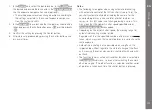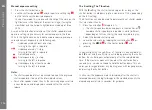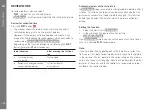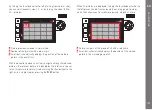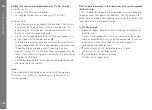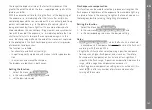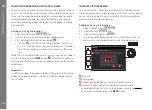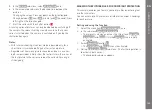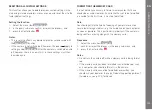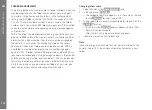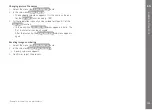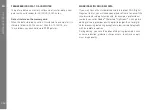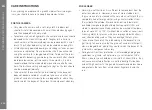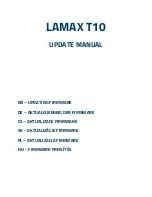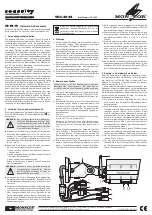
EN
187
Additional functions
The longer the exposure time or the faster this movement, the
greater the extent to which the two – superimposed – parts of the
picture can differ.
With the conventional time for firing the flash, at the beginning of
the exposure, i.e. immediately after the 1st shutter curtain has
completely opened the sensor window. This can actually lead to ap-
parent contradictions, e.g. in the picture of a vehicle, which is
being overtaken by its own light trail. The camera allows you to
choose between this conventional firing moment and synchroniza-
tion with the end of the exposure, i.e. immediately before the 2nd
shutter curtain starts to close the sensor window again. In this
case, the sharp image reflects the end of the movement captured.
In the photograph, this flash technique gives a natural impression
of movement and dynamics.
The function is available
– for all camera and flash unit settings
– in aperture priority mode and with manual shutter speed selec-
tion
– in automatic and manual flash mode.
The displays are identical in both cases.
Setting the function
1. Select the menu item
Flash Settings
,
2. in the sub-menu
Flash Sync. Mode
, and
3. set the desired version.
Flash exposure compensation
This function can be used to selectively reduce or strengthen the
flash exposure regardless of the exposure from available light, e.g.
in a picture taken in the evening, to lighten the face of a person in
the foreground while retaining the lighting atmosphere.
Setting the function
1. Select the menu item
Flash settings
,
2. in the sub-menu
Flash Exposure Compensation
, and
3. in the corresponding sub-menu the desired setting.
Notes:
•
Flash Exposure Compensation
- when the flash unit is attached
- is available only if compensation cannot be set on the flash unit
used, e.g. with the Leica SF26.
• Brighter flash illumination selected using a positive compensa-
tion requires a higher flash power, and vice versa. Therefore,
flash exposure compensation has a more or less significant
impact on the flash range: A positive compensation reduces the
range, while a negative compensation increases it.
• A flash exposure compensation setting remains active until it is
reset to
0
, i.e. after any number of pictures and even after
turning off the camera.
Summary of Contents for M 10
Page 1: ...LEICA M10 ANLEITUNG INSTRUCTIONS ...
Page 2: ...1 10 11 13 15 14 12 12b 19 20 17 18 18a 12c 16a 12a 16 2 3 4 5 2 8 9 6 7 ...
Page 3: ...35 36 37 21 22 23 24 25 26 27 28 30 31 29 33 34 32 ...
Page 4: ......
Page 5: ...LEICA M10 Anleitung ...
Page 7: ...DE 3 ...
Page 41: ...DE 37 Kamera Grundeinstellungen ...
Page 102: ...DE 98 Anhang ANHANG DIE ANZEIGEN IM SUCHER 1 2 3 ...
Page 117: ...LEICA M10 Instructions ...
Page 153: ...EN 149 Camera default settings ...
Page 214: ...EN 210 Appendix APPENDIX VIEWFINDER DISPLAYS 1 2 3 ...

